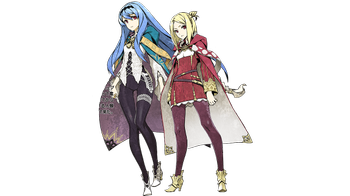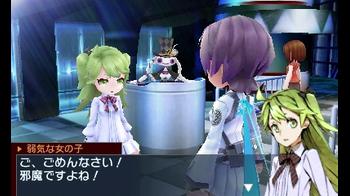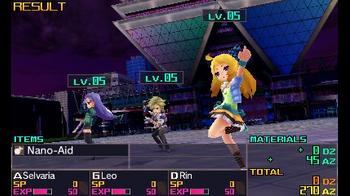
7th Dragon III Code: VFD Review
When 7th Dragon III Code: VFD was announced for Japan last summer, many assumed it would never see Western shores. After all, none of the other games in the series received an official translation, so its chances didn't seem great. However, thanks to Sega's acquisition of Atlus - including the localization team at Atlus USA - Sega has recently been able to localize more of their Japanese titles to North America.
The history of the 7th Dragon series is a bit weird. Originally developed by Imageepoch (Luminous Arc, Stella Glow) and published by Sega, the franchise started with 7th Dragon on Nintendo DS in 2009, which was sort of a mix between a traditional world-map JRPG with Etrian Odyssey-style classes & FOE-like sub-bosses.
Later came the releases of 7th Dragon 2020 and 7th Dragon 2020-II on PSP, a duology that worked as a 'side-prequel' to the original, featuring a more straightforward dungeon crawling experience with a post-modern aesthetic. Common to all these titles is turn-based combat with a class system, along with a main goal to vanquish Dragons that have invaded the world and spread poisonous flowers known as Dragonsbane. Not only do Dragons exhibit destructive powers, but the Dragonsbane can lead to an incurable disease known as Dragon Sickness.
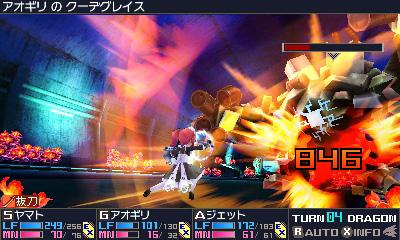
7th Dragon III Code: VFD, then, is naturally the 4th game in the series. Imageepoch filed for bankruptcy in 2015, so Sega is credited as the developer this time around. The game borrows many elements from the two PSP titles, including character/enemy models and some map locations. When Sega of America announced that they were working on an English version of this latest title, they claimed it was "a self-contained episode". While there is some truth to that and players don't have to have played the other games, Code: VFD does refer to earlier entries in many places, and characters from earlier games make appearances. Since this is a unique situation regarding localization and relationship to other 7th Dragon games, I will try to explain some larger series context for Code: VFD.
Code: VFD opens up with the silent player-created main character entering a contest to play a virtual video game called '7th Encount', to see who has the highest battle proficiency. After achieving the high score, you are taken to Nodens Enterprises, the developers of 7th Encount who only use the video game as a front for their real operation: a mission to protect the world from the seven True Dragons that threaten to destroy it. Nodens has created a time machine, where the player is tasked to jump back and forth through time to collect samples from each of the first six True Dragons in order to combat the 7th and final Dragon named VFD. The past world is known as Atlantis, and the future world is known as Eden.
In order to further explain the narrative behind Code: VFD, it helps to place it in context with the other games in the series. The title takes place in 2100, 80 years after the events in 7th Dragon 2020 and 7th Dragon 2020-II. Events in those titles are summarized for the player in early scenes in the game. Essentially, an organization known as Murakumo and their main squad, Unit 13, fought to repel two dragon attacks on Tokyo (one for each 7th Dragon 2020 game). The Unit 13 moniker is brought back in Code: VFD, which is the name given to your party.
Additionally, the future world of Eden is actually the setting of the original 7th Dragon, taking place after the events of that game. Further, the town you travel to, Kazan, is the opening town in the original game. Two important characters are also found here - the sisters Emel and Aytel.
These characters are lifeforms from another planet, Hypnos, which was destroyed by Dragons. They've been on Earth for thousands of years, trying to help humanity avoid the same fate their planet did. In fact, both characters show up in 7th Dragon 2020 (in addition to the original 7th Dragon), so these characters have been seen many times in the series before Code: VFD, and play a large part in the series.
This leads to some oddities when it comes to scenes featuring these two characters. Without the full context of who they are and past history involving them, their presence in Code: VFD on its own can feel truncated. In short, as characters, Emel and Aytel work to tie the whole series together, and Code: VFD works as a finale for their story. Sega might be right in implying that previous series knowledge is unnecessary, but I know I wouldn't have appreciated some of the story beats involving them had I not played the other 7th Dragon games.
Additionally, references to earlier entries are made throughout Code: VFD. Bosses return from earlier games, sidequests extrapolate on various series' characters, and even a few jokes reference events in other games. None of them are too confusing to be nonsensical to those jumping in with Code: VFD, but they will lose out of some of the context for both main and side story events. It's mostly just unfortunate circumstances surrounding the decision to localize the 4th game in a series.
While the narrative does play a fairly significant role in Code: VFD, it's not a strong focus. The story centers around a few key NPCs from each time period. The most important characters include the 14 year-old Mio, a girl who has caught Dragon Sickness and kind of works as the narrative stand-in for the silent protagonist, and Yuma, a defense force soldier competing with Unit 13 to rid the world of Dragons.
Unfortunately, some of the major storyline events in Code: VFD are pretty predictable. There are some surprises sprinkled throughout, but most of the story twists and turns are fairly common for the genre. Overall it works well enough as a vehicle for the gameplay, but it's difficult to praise especially considering some characters require knowledge of untranslated games to fully appreciate.
At its core, Code: VFD is a dungeon crawler. Not first-person Wizardry-style, but you'll spend most of your time traversing through various locations, defeating Dragons and looting treasures. The game structure is actually very straightforward, much like the 2020 duology. When not in a dungeon, you spend your time at Nodens as your hub base where you can initiate sidequests or upgrade the base using DZ points obtained by defeating Dragons. Improving Nodens can lead to stronger weapons and armor, more skills, sidequests, and other bonuses. Each chapter opens a new location to explore, so you head out and defeat more Dragons and open more chests.
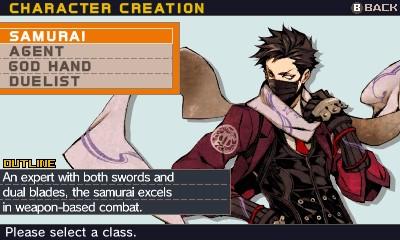
Accompanying the dungeon traversal is a class system with ultimately eight different unit types to choose from. One of the game's biggest strengths can be found in how unique some of the classes are. Instead of a more typical variety including knights, mages, and clerics, Code: VFD includes classes with play-styles that are not especially common. For example, a Duelist uses a deck of elemental cards to either summon creatures or place traps on the battlefield. Their utility depends on how you upgrade their skills and how you use the cards in their hand. Agents can set skills to activate on future turns and can also "hack" enemies, causing a variety of effects the Agent can exploit.
Further, God Hands can inflict a unique ailment known as God's Depth on enemies, which affect the type of punishing attacks they can contribute. Samurai have a variety of movesets, depending on if they single or dual-wield and what sword stance they are in (sheathed or unsheathed).
In addition to the class system, Code: VFD features multiple parties. You set three units as your main party and, part-way into the game, you can place two more sets of three character parties to back up the main party (for a total of nine units). While back-up parties cannot usually act in normal fashion like the main group, they can assist the main party in several ways during combat. The can provide boosts to stats, lower the enemies' defenses, and under special circumstances you can even perform a Unison Attack, which allows all nine units to get a normal turn to perform whatever skill - offense or defense - you'd like them to.
At a few points during the game, you are required to split up your parties as you navigate a dungeon, so it is important to keep not only your main trio up-to-date with equipment and skills, but all nine of your party members. These moments in the game are a little tedious because it requires more configuration to create three workable parties, but I appreciated that it allowed me to dig into other classes that I wouldn't have examined otherwise.
The variety and level of customization in 7th Dragon's class and party systems is easily its most impressive aspect. Unfortunately, most battles in the game can be cleared with more normal strategies, so the high-level of class combinations is somewhat irrelevant.
There are a few key boss encounters where these systems are allowed to truly shine, but those are few and far between. Even then, Unison attacks are too easy to exploit and can usually overpower anything that stands in your way. The general low level of challenge makes progressing through the game more monotonous than it should be.
The overall structure of the game is somewhat mundane, too. Essentially, you take your party to the various dungeons as they open up, clear all the Dragons and collect all the chests, and then repeat that for each chapter. It actually might suit the portable nature of the game, because traversing through a dungeon doesn't require much thought, so you can make progress in short bursts without having to put effort into proceeding through the game.
Other issues also come into play. About 75% of the way through Code: VFD, I somehow met the maximum in-game money cap without even realizing it. I had more than enough to buy all the best weapons/armor for all 9 of my characters as well as maxing out all the consumable items. This is the first game in the series that includes multiple player parties, and it seems to me the developers greatly over-estimated the amount of money needed to keep everybody well equipped.
In the end, it's difficult to recommend 7th Dragon III: Code VFD. The unique class and party systems are watered down by mundane structure and generally low game difficulty. Story beats are either too predictable or lessened by a connection to other games most English players haven't experienced. Those who are fans of turn-based class systems can still find enjoyment here, but it's hard to see the game leaving any lasting impact.
